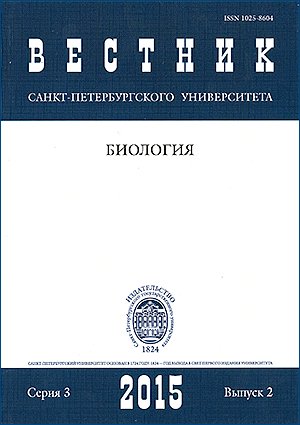Spontaneous activity in neuromuscular synapse of Drosophila melanogaster larvae with human APP gene expression
Abstract
According to amyloid cascade hypothesis the main role in pathogenesis of Alzheimer’s disease plays β-amyloid peptide, which is the product of proteolytic processing of amyloid precursor protein (APP). In regards to APP, physiological role of this protein itself remain incompletely understood. A convenient model for such experiments is Drosophila melanogaster, which does not contain APP and β-secretase genes. So in transgenic lines of Drosophila melanogaster it’s possible to study effects of APP and β-amyloid independently. In our experiments on neuromuscular synapse of Drosophila melanogaster larvae with human APP gene expression a decrease of spontaneous quantal transmitter release frequency without alteration of its random nature was demonstrated. Frequency of spontaneous transmitter release was not affected at decreased level of APP and production of β-amyloid in conditions of co-expression of human APP and β-secretase genes. These changes give evidences for alteration of synaptic vesicle exocytosis mechanism which is specific for APP.
Keywords:
neuromuscular synapse, Drosophila melanogaster, APP, quantal transmitter release
Downloads
References
Downloads
Published
How to Cite
Issue
Section
License
Articles of Biological Communications are open access distributed under the terms of the License Agreement with Saint Petersburg State University, which permits to the authors unrestricted distribution and self-archiving free of charge.





